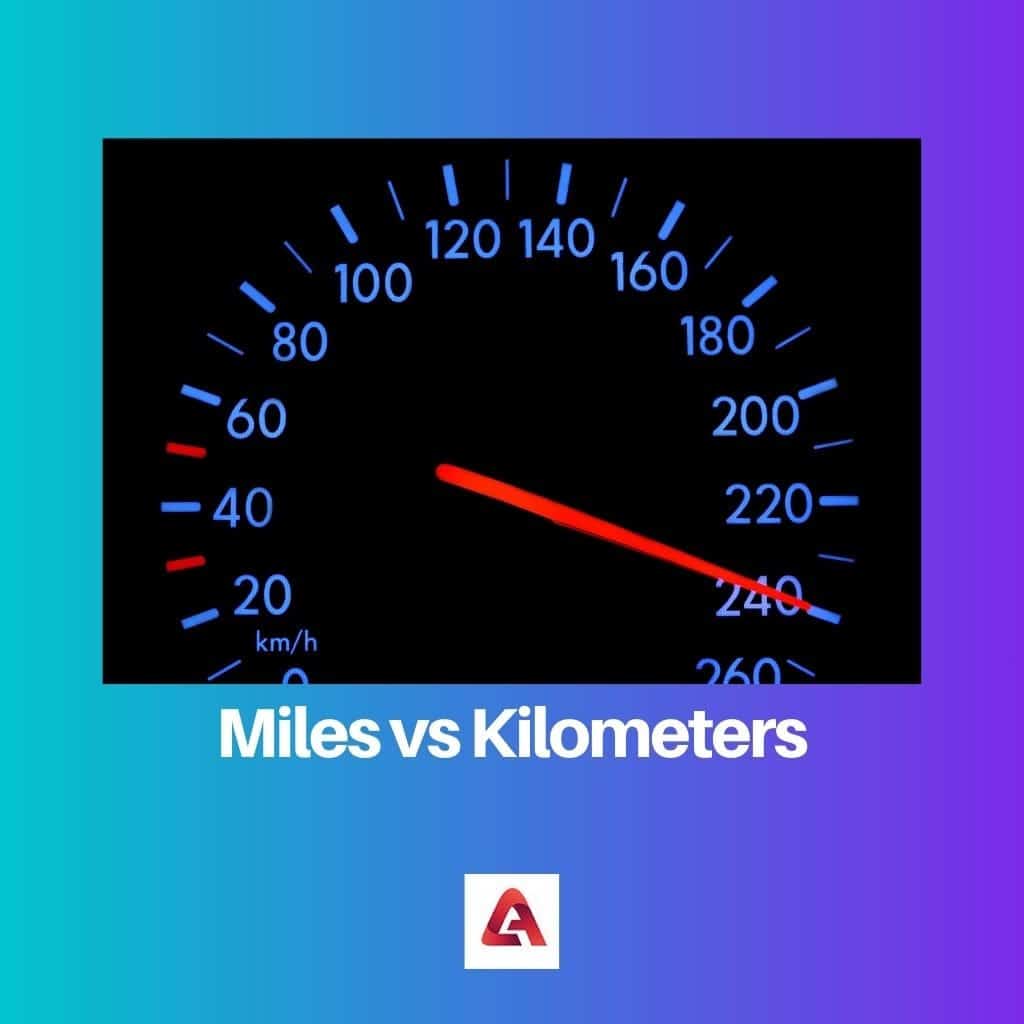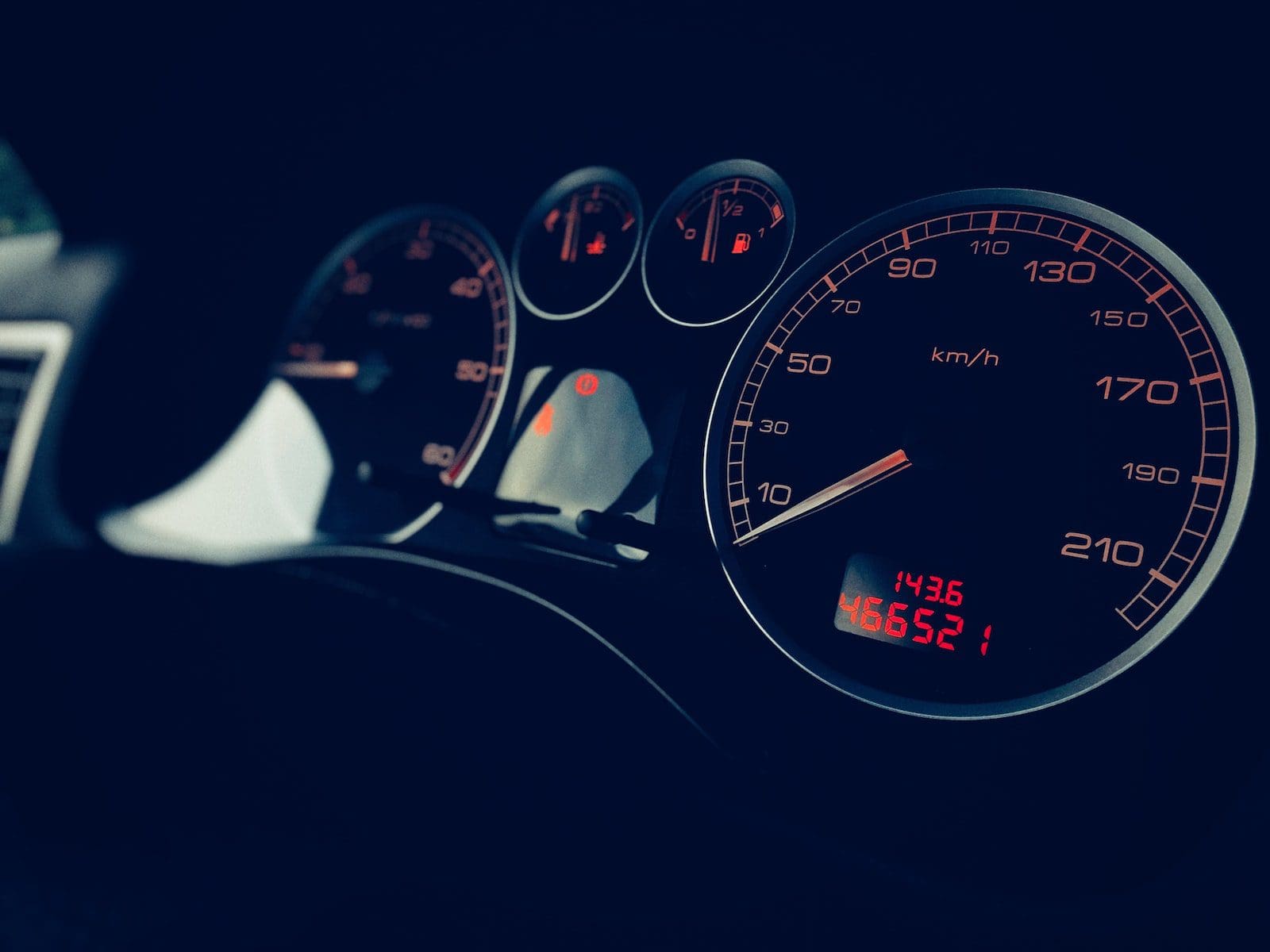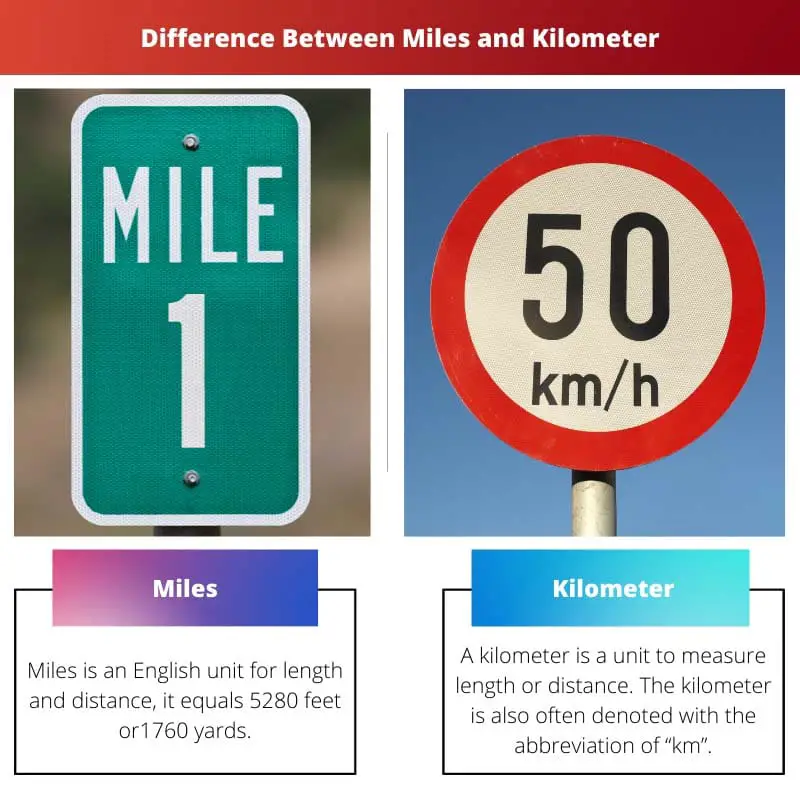Miles and kilometers are both units for measuring any length or distance. In the U.S. and U.K., the standard way of measuring is miles, whereas, in other countries, the standard unit of measuring is kilometers.
Both the terms mean thousand in their respective places they have originated from.
Key Takeaways
- Miles and kilometers are units of distance measurement used in different parts of the world; miles are used in the United States and the United Kingdom, while kilometers are used in most other countries.
- One mile is equal to 1.609 kilometers; one kilometer is equal to 0.621 miles.
- Miles are used to measure shorter distances, such as driving or running, while kilometers are more commonly used for longer distances, such as in international travel or athletics.
Miles vs. Kilometer
Mile is derived from the imperial system. A measuring unit denoted as ‘m’ used in the U.S.A. and U.K. Mile is a traditional unit. A kilometer is derived from the metric system. It is denoted by ‘km.’ It is used in the whole world, and it is a contemporary unit. 1km represents 1000 meters.

A mile is a measurement unit denoted as “mi” or “m.” One mile converts back to 1,609.344 meters. It was a traditionally popularized unit, but eventually, a mile is not the most preferred or recognized symbol.
A kilometer, on the other hand, is also a unit of measuring length. It is also denoted as “km.”
One mile converts back to 1000 meters. It is a symbol that is recognized worldwide and also used. It is the contemporary unit of measurement.
Comparison Table
| Parameter of Comparison | Miles | Kilometer |
|---|---|---|
| Use | Used in the early days of civilization | Used in the later parts od18th century |
| Countries | U.S.A. and U.K. | Accepted worldwide |
| Symbol | “mi” and “m” is used for mils | “km” is used for a kilometer |
| System | Under the imperial system | Under the metric system |
| Conversion | Has several equivalents | It always equals to 1000 meters |
| Application | Applied in calculating distance on land, sea, and space | Usually calculates distance across land |
| Length | It is shorter | It is longer |
| Unit of Measurement | The traditional unit of measurement | Contemporary unit of measurement |
| Spelling | Spelled in a similar way everywhere | In British and Australian English spelled as “kilometre” |
What is Miles?
Miles is an English unit for length and distance; it equals 5280 feet or 1760 yards. “mile” was derived from the Latin word “milia,” meaning thousand. In ancient Rome, one mile used to refer to a thousand paces.
Hence, the concept of “milestone” was discovered (stone craved with numerical).
Mile is a part of the U.S. and U.K. standard unit of measurement. Miles is under the imperial system, although, compared to the metric system, 1 mile is around 1,609.344 meters, according to the International Agreement 1957.
The symbol “mi” or “m” denotes a mile. Miles was first officially used in 1824 in the British Empire.
Mile is found in several aspects of measurements such as the international, US survey, nautical, metric, and Scandinavian miles.
Usage of Miles
In countries like the United States and the United Kingdom, miles are predominantly used to measure distance. This unit of measurement is commonly found in contexts such as road travel, aviation, and sports.
- Road Travel: In the US and UK, road signs and maps display distances in miles. Furthermore, fuel efficiency is measured in miles per gallon (MPG) for vehicles in these countries. For example, a typical car can travel about 25 miles per gallon of gasoline.
- Aviation: Navigating by air, particularly in the US and UK, involves measuring distance in nautical miles. One nautical mile equals 1.15 statute miles or 1.852 kilometers.
- Sports: Running races, such as marathons, are measured in miles. A marathon race covers a distance of 26.2 miles.
Origin of Miles
The term “mile” originated from the Latin word “mille passus,” meaning “a thousand paces.” In ancient Rome, a pace was a double step; one mile was equal to 5,000 Roman feet. Over time, the mile’s conversion and various definitions have changed to suit different measurement systems.
The international mile, or the statute or land mile, measures 5,280 feet or 1,609.344 kilometers. It is part of the imperial system, which is commonly used in countries like the United States and the United Kingdom, and remains in widespread use for everyday measurements.

What is Kilometer?
A kilometer is a unit to measure length or distance. The kilometer is also denoted with the abbreviation of “km.” It is a vital part of the metric system of measurement. 1 kilometer is equivalent to 1000 meters.
The kilo means thousand in Greek. The kilometer came into use only during the 1790s
The kilometer is the official unit used for expressing geographical distances between places worldwide, apart from two exceptions: the U.S.A. and U.K.
The Committee for Weights and Measurement recognized kilometers as the standard unit for length measurement worldwide during the 19th century.
Sporting events feature 1 kilometer (1000m) races for major events. Kilometers in British and Australian countries are spelled as “kilometre.”
Usage of Kilometers
Kilometers are the standard unit of distance measurement in most countries. They are used in the metric system, which is globally recognized and employed as the primary measurement system. Kilometers are used in various contexts, including roadway systems, sports, and scientific applications.
- Road Travel: In countries that use the metric system, road distances are expressed in kilometers. Additionally, fuel efficiency is measured in liters per 100 kilometers, starkly contrasting the MPG measurement used in the US and UK.
- Sports: In many athletic events outside the US and UK, distances are reported in kilometers. For example, the 10-kilometer (10K) race is a popular running event that spans a length of 10,000 meters.
- Scientific Applications: Scientists across the globe use the metric system, with kilometres being the primary unit of measurement for distances. As such, it plays a crucial role across various scientific fields, including geology, astronomy, and meteorology.
Origin of Kilometers
Conversely, the kilometre traces its origins to the introduction of the metric system in the late 18th century. The metric system was designed to simplify and standardize measurements using a base-10 system. A kilometre is derived from the Greek word “χίλιοι” (chilioi), which means “a thousand,” and “métron,” meaning “measure.” It is equivalent to 1,000 meters or roughly 0.62 miles.
The metric system is preferred for scientific and mathematical calculations, given its adherence to a logical base-10 system, simplifying conversions and calculations. It is widely used across the globe, including Europe, Asia, and countries like Canada and Australia.

Main Differences Between Miles and Kilometers
- Miles as a unit of measurement was used during the early days of civilization, whereas kilometers came into use in 1790.
- Miles is a unit of measurement that is only used in a few countries, such as the U.S.A. and the U.K. Conversely, a kilometer is accepted worldwide as a unit of measurement.
- Mile is also denoted as “mi” or “m,” while kilometer is denoted as “km.”
- Miles is recognized under the imperial system, whereas kilometer is recognized under the metric system.
- One mile has several equivalents, such as the international mile, survey mile, nautical mile, etc., and each converts back to different values, whereas for kilometer is always similar, 1 kilometer will always represent 1000 meters.
- Mile as a unit of measurement is used for measuring several aspects such as distance on land, sea, and space. In contrast, a kilometer is only used for calculating the distance across the land.
- Mile is longer than kilometers; one mile converts back to 1609.344 meters, whereas one kilometer converts back to 1000 meters.
- Miles is a more traditional unit of measurement, whereas a kilometer is a contemporary unit of measurement.
- Miles is spelled in the same way all across the world, whereas kilometer is spelled differently in certain places, such as in British and Australian English spelled as “kilometre”
Conversion Methods
This section will discuss the methods for converting miles to kilometers and vice versa. These conversions are essential when dealing with different measurement systems, for example, when traveling or comparing distances.
Converting Miles to Kilometers
To convert miles to kilometers, you should follow these simple steps:
- Write the number of miles you want to convert.
- Multiply the number of miles by the conversion factor, which is approximately 1.60934. For instance, if you have 5 miles, your calculation would be:
5 miles × 1.60934 = 8.0467 kilometers
Keep in mind that if you require a higher level of accuracy, you can use more decimal places for the conversion factor. Alternatively, you can use online tools or unit converter apps for quick and accurate conversions.
Converting Kilometers to Miles
Similarly, to convert kilometers to miles, follow these steps:
- Write down the number of kilometers you want to convert.
- Multiply the number of kilometers by the conversion factor, which is approximately 0.62137. For example, if you have 10 kilometers, your calculation would be:
10 kilometers × 0.62137 = 6.2137 miles
Once again, if a higher level of accuracy is needed, use more decimal places for the conversion factor. Moreover, online tools and unit converter apps are readily available for quick and precise conversions.

- https://books.google.com/books?hl=en&lr=&id=xgAVXHhuNYgC&oi=fnd&pg=PA3&dq=miles&ots=BW1v4Clwd4&sig=JFbB5EwgSD3Q8xFbnTB43KAfKco
- https://books.google.com/books?hl=en&lr=&id=xgAVXHhuNYgC&oi=fnd&pg=PA3&dq=miles&ots=BW1v4Clwd4&sig=JFbB5EwgSD3Q8xFbnTB43KAfKco
- https://www.osapublishing.org/abstract.cfm?uri=oe-21-22-26836

The article is a valuable resource for gaining insights into the historical, cultural, and practical considerations of using miles and kilometers.
Definitely, it’s great to have a thoughtful exploration of the differences in measurement systems.
What an informative article about the differences between miles and kilometers! The historical aspect is particularly interesting.
Definitely! Knowing the cultural and historical influence on these units adds a whole new depth to understanding them.
Absolutely, learning about the origins of measurement units is fascinating.
This article brilliantly elucidates the distinctions between miles and kilometers, covering their history, usage, and significance in various fields.
Absolutely, understanding these measurement units in depth can offer a richer perspective on their applications in different regions.
This article offers a nuanced perspective on the differences between miles and kilometers, highlighting their diverse applications and relevance in different regions.
Indeed, the article’s emphasis on the multifaceted nature of these measurement units adds depth to our understanding.
Absolutely, the detailed examination of miles and kilometers broadens our awareness of their global significance.
I appreciate the comprehensive analysis presented in the article, shedding light on the evolution and regional preferences of miles and kilometers.
Absolutely, the article’s thorough examination enhances our grasp of the complexities associated with these measurement units.
Indeed, this in-depth exploration provides valuable insights into the global significance of miles and kilometers.
The article presents a compelling comparison between miles and kilometers, emphasizing the cultural and historical factors that shaped their distinct roles.
Absolutely, understanding the impact of regional influences is crucial in comprehending the prevalence of these measurement units.
The article presents a logical and detailed contrast between miles and kilometers, showcasing the significant differences in their use and origin.
Absolutely, having a comprehensive understanding of miles and kilometers can help navigate their usage in different contexts.
I agree, it’s quite enlightening to learn about the distinctive characteristics and applications of these two units.
This article provides a clear comparison of miles and kilometers, making it easier to understand the nuances of each unit of measurement.
Yes, it’s great to have a comprehensive breakdown of the differences between miles and kilometers.
An enlightening article that delves into the historical and practical aspects of miles and kilometers, enriching our comprehension of their distinctive characteristics.
Absolutely, this article provides a holistic view of the cultural, historical, and geographical influences on miles and kilometers.
An engaging and thought-provoking article that deepens our understanding of the fundamental differences between miles and kilometers.
Indeed, this article prompts us to reflect on the cultural and historical contexts that shaped these distinct units of measurement.